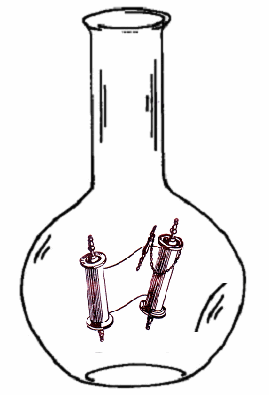 One particularly helpful method of Torah study and teaching is the Four Worlds, Arba Olamos model. This approach has four synergistic dimensions of exploration for Jewish text, so we can expand the meaning of a text for ourselves and experience its relevance to our lives.
One particularly helpful method of Torah study and teaching is the Four Worlds, Arba Olamos model. This approach has four synergistic dimensions of exploration for Jewish text, so we can expand the meaning of a text for ourselves and experience its relevance to our lives.
Dimension One: World of Assiyah (tachlis, basics, action)
Key question to explore: What is the actual text?
1. Read the text out loud in the language that works for you.
2. Look at the actual words and phrases, story line and characters very carefully, see it for what it is.
3. What is happening in the text? Who is speaking? What did they say/do?
4. a. For individual study, if at all possible, do as our tradition says, "take a friend for yourself and go and study." Using these methods in the context of a friendship helps to focus and deepen the study of Torah and the spiritual intimacy of your relationship. This is called "hevruta" (friendship based study) in Hebrew.
4. b. In a group, it usually works best for the facilitator to read the text aloud dramatically. Some groups do well going around in a circle with everyone taking a line or paragraph.
Dimension Two: World of Yetzirah (kishkes)
Key question to explore: What are the actual feelings this text brings up in you?
1. Express out loud with facial, body and hand motions, and words if desired, the strongest sensations within your body that the text brings up for you.
2. To handle this in a group, we suggest that:
a. After reading a segment of text out loud (try, for example, the first 24 lines of Parshat Emor in Leviticus). next invite each person to identify a word and a replicable motion of their hands/face/body the most powerful sensation the text brought up in them. This is a wonderful approach I learned from the choreographer Liz Lerman at an ALEPH Kallah.
b. Go around. Let each person say the phrase or words that describe the sensations the text evokes and make the relevant symbolic moments. Mirroring is important, have the whole group repeat each person's sensing phrase as one voice and also enact the same movements.
c. Then look at the speaker and say "shama-ti"* and their name " ".
(*Shama-ti means "I have listened", it comes from the Unity of All Being prayer which is found in Deuteronomy: "Sh'ma Yisrael Adonai Eloheyu, Adonai Echad.")
Note: It is very validating and expanding to have a group repeat your sensation and the motion of your senses about "all this" that you feel about the text being studied. It also feels bonding and wonderful to see all eyes upon you during the "shamati" and to hear your name recited as a giver-over of Torah to the group.
Dimension Three: Beriyah (Yiddishe Kup - thought - intellect)
Key question to ask: What are the questions we want to ask of this text, characters and author(s)?
1. Write down your questions.
2. In a group, use the same method above. Each person gets a turn to dramatically pose their most urgent question. The group repeats the question with the asker's inflection, says "shama-ti" and the person's name. NO answers are given....the field of inquiry simply becomes much richer by the sharing.
Dimension Four: Atzilut (Unification with the Source - Becoming the text)
Key question to ask: Whose voices, issues and experience in the text could be mine?
Become the text by empathetically taking on the voice of one of the characters or symbols. Enter into dialogue with another of the characters or symbols. Notice important relationships and characters who may not be present in this particular section of texts, invite them into the story. Become their voices. If you are studying on your own, you might write down these dialogues, or monologues, as the case may be.
Note: The revelation/vision for the future and understanding of your own past through this experience will create an interpenetration of the metaphors and world the Torah with the Torah of your own life. This is a form of Yechidus, closeness to the Oneness. Notice your experience in all the dimensions we have covered. It is more layered than linear as an experience, there is complexity and richness. All dimensions are occurring simultaneously, yet informed by the sequential focus on each....like an opera of exploration and knowing.
Exploring on the Fourth Dimension is a very delicate thing to do in a group (and on one's own, this is powerful stuff.) For groups an experienced biblio-drama or psychodrama facilitator is important. I, personally and professionally, believe in a Torah study group one needs to keep boundaries at the level of raising awareness and not push such an experience into the realm of therapy.) This work can be very wonderful!